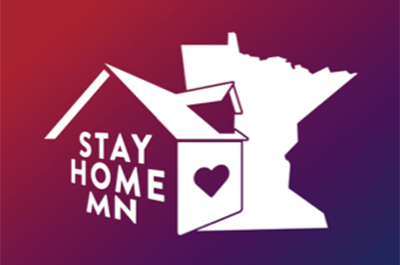Gov. Tim Walz said Wednesday he will let his stay-at-home order expire on May 18 but extend many restrictions on public gatherings, including a ban on attending large in-person religious services and eating at restaurants.
 In a televised speech, Walz said Minnesota now has enough supplies of personal protective equipment, ventilators and intensive care hospital beds to handle the state’s predicted peak of COVID-19 cases this summer, but only if residents keep up much of their physical distancing efforts. The state has also expanded its testing capacity.
In a televised speech, Walz said Minnesota now has enough supplies of personal protective equipment, ventilators and intensive care hospital beds to handle the state’s predicted peak of COVID-19 cases this summer, but only if residents keep up much of their physical distancing efforts. The state has also expanded its testing capacity.
“We must keep this virus at a simmer, not a boil,” Walz said.
Once the stay-home directive ends, most retail businesses will be allowed to open at half capacity under safety guidelines. Small social gatherings with 10 or fewer people are also permitted after May 18.
Walz first ordered bars and restaurants to close on March 17 and implemented a stay-at-home order on March 27. The governor twice extended that order, which has now been in effect for 47 days. Since the pandemic began, at least 638 Minnesotans have died of COVID-19, a disease that has particularly plagued elderly people who live in long-term care facilities such as nursing homes. The economic fallout from coronavirus — and the state’s response — has led to more than 650,000 Minnesotans applying for unemployment benefits so far.
Here’s what you need to know about what will and won’t be able to open starting next week:
Who can go back to work?
A new executive order signed by Walz on Wednesday says that many businesses once deemed not critical can open as long as they have a plan for safe operation based on health guidelines and operate at half capacity. That includes retail stores and malls, as well as businesses that provide household services like cleaners and piano tuners.
While the state does not need to approve each plan, employers must require people to work from home when possible, establish social distancing procedures, plus hygiene and sanitation controls. For businesses that serve customers indoors, workers and customers need to maintain 6-foot distancing. (The half capacity rule is not about the number of customers served, but the number of people inside a business at a given time. It’s defined in the order as a business maintaining “50 percent of the normal occupant capacity as determined by the fire marshal.”)
Those plans must also be posted in writing for workers at each business and online where physical posting is “impracticable,” the order says. Noncritical businesses have to train workers on the contents of their plans to make sure employees can adhere to it.
Under the executive order, a business owner, manager, or supervisor who encourages employees, contractors or others working for them to break the state’s rules can face a gross misdemeanor that carries a fine of up to $3,000 and a year in jail. Any individual who breaks the rules “willfully” can also face a misdemeanor that carries a fine of up to $1,000 and 90 days in prison, the order says.
What about parties or gatherings?
All gatherings of more than 10 people are prohibited under the governor’s rules. That includes religious services, sporting events, concerts, parades and festivals that include more than 10 people from more than one household. Those gatherings are banned even if social distancing could be maintained during them.
Drive-in gatherings are allowed, as long as people stay in their vehicles and follow health guidelines.
The governor’s order also says that “dispersed and remote camping sites” for use by members of a single household are also allowed, among a range of other outdoor activities and businesses such as small “one-on-one” or “one-on-two” guided fishing tours. The Department of Natural Resources says that includes dispersed camping in state forests, but all camping in state parks remains banned through May 31. The Boundary Waters Canoe Area Wilderness will be open May 18 for overnight and day-use camping.





The phrase “half capacity” has been widely misunderstood. This does not mean retail businesses will have to serve half as many customers as they used to, with the attendant risk that they might generate only half as much revenue. Rather, it means the number of people in the store at one time must be no more than half the maximum prescribed by the fire marshal based on the physical premises.
Updated to make more clear what half capacity is referring to. Thank you!
Since most bsinesses seldom run at full capacity, this means that the hit will be less than 50%.
Seems like the governor is doing a good job trying to balance public safety with the economic crisis.
Fully open up the Churches! And keep them open! All “Stay At Home” Orders ARE by nature UNCONSTITIONAL and break the FIRST AMENDMENT of the BILL OF RIGHTS! Such a shame that 43 States are willing break the FIRST AMENDMENT! Yahweh bless the seven States (ND, SD, WY, UT, NE, IA, AR) that kept the First Amendment of The Bill of Right! (note all Republican Governors in these seven Godly States)